Comel
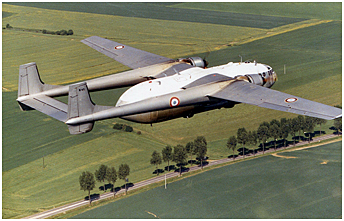
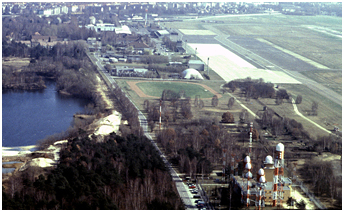 The main mission of the Gabriel was to intercept and analyze the electromagnetic waves emitted by Warsaw Pact aviation forces in the GDR, Czechoslovakia and,
to a lesser extent, Poland. The targets were radars, radio beacons, air-to-air and air-to-ground radio communications, the first data link transfers, etc.
Frequencies used, radio call signs of each unit (and even of pilots), operational procedures and so forth were recorded and documented. Radars, whether at
an airbase, a SAM or an anti-aircraft defense detection site, had to be located and their function determined (stand by, search or track). Onboard aircraft radars
also had to be identified, along with their associated air-to-air missiles. Overall, it was about establishing and maintaining the potential adversary's
electronic order of battle (OBT, Ordre de Base des Transmissions). Every four months, frequencies and call signs were changed when the Soviet conscript
troop rotation took place. It therefore became necessary to update the information collected previously to restore a valid emissions order of battle as soon as possible
(it was once done in nearly 48 hours, a record) in order to remain able to detect potential warning signs (1).
During that agitated period when the entire staff was mobilized, Gabriel flew one or two missions a day and an aircraft was on standby ready to take off within one hour.
The main mission of the Gabriel was to intercept and analyze the electromagnetic waves emitted by Warsaw Pact aviation forces in the GDR, Czechoslovakia and,
to a lesser extent, Poland. The targets were radars, radio beacons, air-to-air and air-to-ground radio communications, the first data link transfers, etc.
Frequencies used, radio call signs of each unit (and even of pilots), operational procedures and so forth were recorded and documented. Radars, whether at
an airbase, a SAM or an anti-aircraft defense detection site, had to be located and their function determined (stand by, search or track). Onboard aircraft radars
also had to be identified, along with their associated air-to-air missiles. Overall, it was about establishing and maintaining the potential adversary's
electronic order of battle (OBT, Ordre de Base des Transmissions). Every four months, frequencies and call signs were changed when the Soviet conscript
troop rotation took place. It therefore became necessary to update the information collected previously to restore a valid emissions order of battle as soon as possible
(it was once done in nearly 48 hours, a record) in order to remain able to detect potential warning signs (1).
During that agitated period when the entire staff was mobilized, Gabriel flew one or two missions a day and an aircraft was on standby ready to take off within one hour.
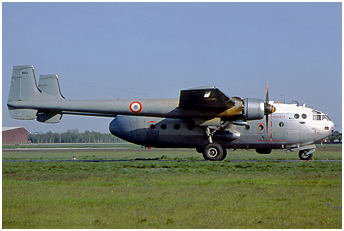
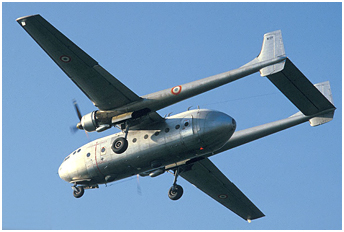 Then, it was necessary to recheck the data again and again to stay up to date and thwart false radar echoes or false radio communications deliberately
emitted to deceive, according to the art of maskirovka or how to deceive the enemy (in this case, by disseminating false information or creating
fictitious potential targets). New equipment should likewise be identified and its performance estimated. Sometimes, air and ground resources focused on a
specific target like a particular aircraft type in order to determine its capabilities and to develop counter-measures targeted against it. It might well be
a particular regiment so as to establish its operational capability. Thus, the FMLM could contribute to the operation. All the monitoring provided an
understanding of the composition of the opposing air forces, knowing their tactics and estimating the training level of the pilots and air traffic controllers.
Fixed and mobile ground monitoring stations (some having an electronic jamming function) subordinate to the command of the Electronics Group were mostly positioned
along the Inner-German and Czechoslovak borders and in France. They had the same missions as the Gabriel, but the latter had the opportunity to cover areas
that ground stations could not hear.
The main ground stations were located in Achern, Goslar, Bad Lauterberg, Furth im Wald and Berlin-Tegel (2).
Furthermore, detection of warning signs, along with monitoring and analysis of the opponent's capabilities, would allow development of offensive or defensive
counter-measures in order to facilitate penetration of the FATac fighter-bombers for tactical nuclear strikes, as well as the Mirage IVA and then the Mirage IVP
of the Strategic Air Forces (Forces Aériennes Stratégiques - FAS), carrying strategic nuclear weapons. Bear in mind indeed that France was - and still is -
an independent nuclear power that left the NATO integrated command structure in 1966 (France rejoined that structure in 2009). Thus, keeping current and developing
new electronic reconnaissance material were justified, especially as cooperation with the allies in this area was virtually non-existent.
Then, it was necessary to recheck the data again and again to stay up to date and thwart false radar echoes or false radio communications deliberately
emitted to deceive, according to the art of maskirovka or how to deceive the enemy (in this case, by disseminating false information or creating
fictitious potential targets). New equipment should likewise be identified and its performance estimated. Sometimes, air and ground resources focused on a
specific target like a particular aircraft type in order to determine its capabilities and to develop counter-measures targeted against it. It might well be
a particular regiment so as to establish its operational capability. Thus, the FMLM could contribute to the operation. All the monitoring provided an
understanding of the composition of the opposing air forces, knowing their tactics and estimating the training level of the pilots and air traffic controllers.
Fixed and mobile ground monitoring stations (some having an electronic jamming function) subordinate to the command of the Electronics Group were mostly positioned
along the Inner-German and Czechoslovak borders and in France. They had the same missions as the Gabriel, but the latter had the opportunity to cover areas
that ground stations could not hear.
The main ground stations were located in Achern, Goslar, Bad Lauterberg, Furth im Wald and Berlin-Tegel (2).
Furthermore, detection of warning signs, along with monitoring and analysis of the opponent's capabilities, would allow development of offensive or defensive
counter-measures in order to facilitate penetration of the FATac fighter-bombers for tactical nuclear strikes, as well as the Mirage IVA and then the Mirage IVP
of the Strategic Air Forces (Forces Aériennes Stratégiques - FAS), carrying strategic nuclear weapons. Bear in mind indeed that France was - and still is -
an independent nuclear power that left the NATO integrated command structure in 1966 (France rejoined that structure in 2009). Thus, keeping current and developing
new electronic reconnaissance material were justified, especially as cooperation with the allies in this area was virtually non-existent.
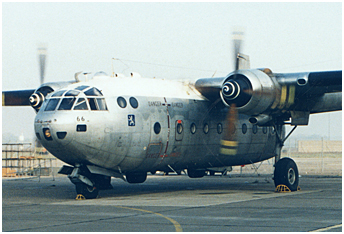
 While the Cold War was coming slowly to an end in the late eighties, N2501 Gabriel platforms were nearing the end of their careers. In 1987, the squadron had only
four aircraft left (n°28, 41, 42 and 66). A substitute aircraft was indeed beginning to reveal the tip of its nose: two new C160 Transall NG "Gabriel" were delivered
to the unit on January 3, 1989. Meanwhile, n°42 was retired in January 1988 and delivered to the base firefighters a year later (n°25 suffered a similar fate at Tegel
in 1983), while n°28 left active duty in January 1989, soon followed by n°41 withdrawn from service on June 30. Therefore, it was n°66 that finally accomplished the
last flight of an EE 1/54 Gabriel on October 26, 1989. It also became the very last flight of a French Air Force N2501.
While the Cold War was coming slowly to an end in the late eighties, N2501 Gabriel platforms were nearing the end of their careers. In 1987, the squadron had only
four aircraft left (n°28, 41, 42 and 66). A substitute aircraft was indeed beginning to reveal the tip of its nose: two new C160 Transall NG "Gabriel" were delivered
to the unit on January 3, 1989. Meanwhile, n°42 was retired in January 1988 and delivered to the base firefighters a year later (n°25 suffered a similar fate at Tegel
in 1983), while n°28 left active duty in January 1989, soon followed by n°41 withdrawn from service on June 30. Therefore, it was n°66 that finally accomplished the
last flight of an EE 1/54 Gabriel on October 26, 1989. It also became the very last flight of a French Air Force N2501.
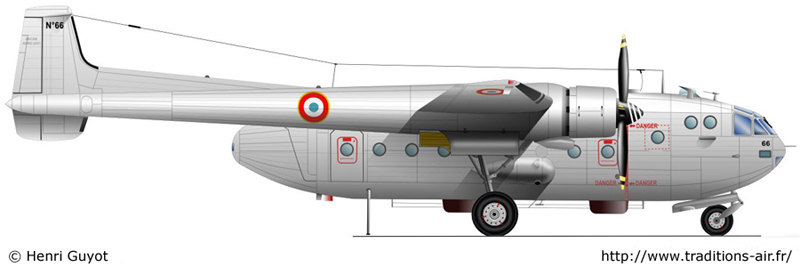
Gabriel VI
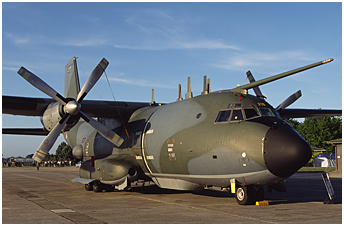 In the mid-seventies, the equipment of the N2501 Gabriel gradually became obsolete, with the airframe getting old as well. It was necessary to find a successor
and this became the C160 Transall New Generation - an aircraft that could be refueled in flight - that was preferable to the Breguet Atlantic and the Mystère 20
as the new SIGINT platform. Only two aircraft (3) went into service, but they obviously benefited from
the more efficient and evolutionary equipment than that of their predecessors. The new airborne intercept and analysis suite aboard the Transall "Gabriel VI" was
designated ASTAC for Tactical Superheterodyne Analyzer (Analyseur Superhétérodyne TACtique) (4).
The system comprised an OSIRIS (Intelligence and SIGINT Information System Integration Organizer - Organisation Système d'Intégration du Renseignement et des
Informations SIGINT) mobile ground station that completed the initial processing performed aboard the aircraft. The latter allowed an initial assessment, while
the ground station, which received the information from the Gabriel sensors by data link, gave an overall picture of the situation. In Metz, a computer system called
IRIS (Intelligence and SIGINT Information Integration - Intégration du Renseignement et des Informations SIGINT) allowed restoration and visualization of the
adversary's global aerial situation.
The C160 Gabriel crew was composed of two pilots, a radio navigator and a flight engineer. The cargo hold was occupied by nine operators who comprised the
SIGINT team, that is to say, three ELINT operators, a systems engineer, a SIGINT team leader, an HF operator and three COMINT operators.
In the mid-seventies, the equipment of the N2501 Gabriel gradually became obsolete, with the airframe getting old as well. It was necessary to find a successor
and this became the C160 Transall New Generation - an aircraft that could be refueled in flight - that was preferable to the Breguet Atlantic and the Mystère 20
as the new SIGINT platform. Only two aircraft (3) went into service, but they obviously benefited from
the more efficient and evolutionary equipment than that of their predecessors. The new airborne intercept and analysis suite aboard the Transall "Gabriel VI" was
designated ASTAC for Tactical Superheterodyne Analyzer (Analyseur Superhétérodyne TACtique) (4).
The system comprised an OSIRIS (Intelligence and SIGINT Information System Integration Organizer - Organisation Système d'Intégration du Renseignement et des
Informations SIGINT) mobile ground station that completed the initial processing performed aboard the aircraft. The latter allowed an initial assessment, while
the ground station, which received the information from the Gabriel sensors by data link, gave an overall picture of the situation. In Metz, a computer system called
IRIS (Intelligence and SIGINT Information Integration - Intégration du Renseignement et des Informations SIGINT) allowed restoration and visualization of the
adversary's global aerial situation.
The C160 Gabriel crew was composed of two pilots, a radio navigator and a flight engineer. The cargo hold was occupied by nine operators who comprised the
SIGINT team, that is to say, three ELINT operators, a systems engineer, a SIGINT team leader, an HF operator and three COMINT operators.
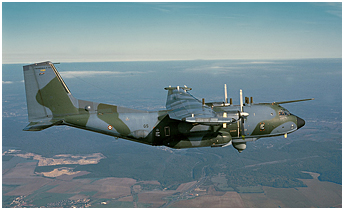 On the other hand, the new Gabriel filled a gap compared to its predecessor, because it was originally equipped for photography. Two tear drop fairings were located on
each fuselage side behind the rear side doors. A sliding hatch located in the center of these protrusions opened upwards following the curve of the fairing to allow
photography with Omera-51 cameras. The doors of the cargo ramp that were useless on this Transall version were welded.
On the other hand, the new Gabriel filled a gap compared to its predecessor, because it was originally equipped for photography. Two tear drop fairings were located on
each fuselage side behind the rear side doors. A sliding hatch located in the center of these protrusions opened upwards following the curve of the fairing to allow
photography with Omera-51 cameras. The doors of the cargo ramp that were useless on this Transall version were welded.
The use of Gabriel VI inside the Berlin air corridors was of short duration due to the turn of events. The first mission took place on March 21, 1989, whereas the
Berlin Wall fell seven months later on November 9, putting an early end to missions in the air corridors; henceforth they became moot.
The C160 Gabriel (became gray) of Airborne Electronic Squadron 00.054 (Escadron Electronique Aéroporté since September 2009) moved to Air Base 105 at Evreux during
the summer of 2011.
Sarigue
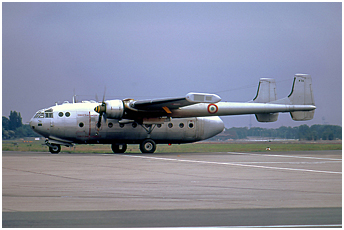
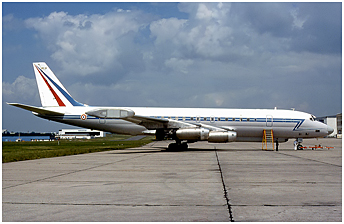 After treating the Gabriel and having briefly discussed other means of intelligence targeting against the GDR, it would be an omission not to mention the DC-8
Sarigue despite the fact that it did not fly over the GDR during the Cold War, but did fly along its borders.
While the Gabriel were tactical intelligence aircraft, the airborne electronic warfare intelligence system (Sarigue - Système Aéroporté de Recueil des Informations
de Guerre Electronique / sarigue is also the word for opossum) was carrying out intelligence missions with strategic significance. A DC-8-33 (F-RAFE 45570/134)
already in service with the French AF was transformed into an electronic intelligence aircraft during the 1970s and was officially accepted into the inventory on
July 15, 1976.
After treating the Gabriel and having briefly discussed other means of intelligence targeting against the GDR, it would be an omission not to mention the DC-8
Sarigue despite the fact that it did not fly over the GDR during the Cold War, but did fly along its borders.
While the Gabriel were tactical intelligence aircraft, the airborne electronic warfare intelligence system (Sarigue - Système Aéroporté de Recueil des Informations
de Guerre Electronique / sarigue is also the word for opossum) was carrying out intelligence missions with strategic significance. A DC-8-33 (F-RAFE 45570/134)
already in service with the French AF was transformed into an electronic intelligence aircraft during the 1970s and was officially accepted into the inventory on
July 15, 1976.
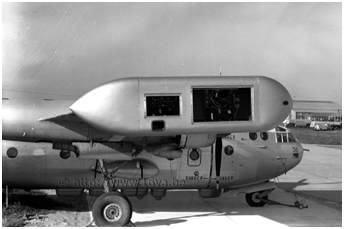 A unit was created specifically for the operation of this aircraft, Electronic Squadron 00.051, declared operational on June 1, 1977 at Brétigny.
The squadron, christened "Aubrac", moved permanently to Evreux on December 12, 1977. This aircraft had retained the livery of other transport DC-8s of the French AF,
thus giving it the appearance of an airliner, although it hardly looked like a civilian aircraft in the eyes of a knowledgeable person. The Sarigue was a SIGINT
platform also equipped for photography. The COMINT equipment suite included VHF/UHF radios operating from 20 to 500 MHz. The ELINT equipment could intercept radar
emissions between 30 and 125 MHz, as well as intercept and locate radars using a frequency between 125 and 18,000 MHz.
Fairings hiding receiving and interferometry antennas that could pick up emissions between 125 and 1000 MHz were attached to the wing tips, while the antennas housed
in the ventral radome were working above 1 GHz.
A unit was created specifically for the operation of this aircraft, Electronic Squadron 00.051, declared operational on June 1, 1977 at Brétigny.
The squadron, christened "Aubrac", moved permanently to Evreux on December 12, 1977. This aircraft had retained the livery of other transport DC-8s of the French AF,
thus giving it the appearance of an airliner, although it hardly looked like a civilian aircraft in the eyes of a knowledgeable person. The Sarigue was a SIGINT
platform also equipped for photography. The COMINT equipment suite included VHF/UHF radios operating from 20 to 500 MHz. The ELINT equipment could intercept radar
emissions between 30 and 125 MHz, as well as intercept and locate radars using a frequency between 125 and 18,000 MHz.
Fairings hiding receiving and interferometry antennas that could pick up emissions between 125 and 1000 MHz were attached to the wing tips, while the antennas housed
in the ventral radome were working above 1 GHz.
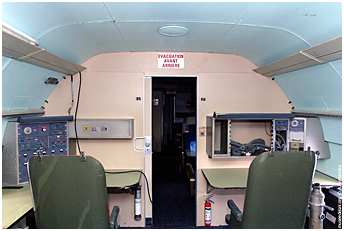
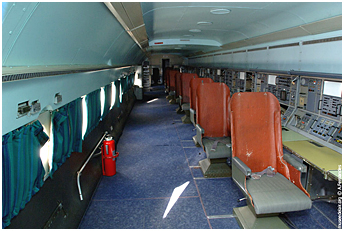 Three Omera 36 cameras (one vertical and two oblique) allowed coverage from horizon to horizon. They were used at high
altitude, at level 300 (10,200 meters). The crew consisted of two pilots, one or two radio-navigators and a flight engineer. The SIGINT team composition varied
according to the type of mission. Thus, 13 ELINT operators and 10 COMINT operators embarked in the European Theater. The photographer was sitting in the back at left.
The crew members had a parachute and the required survival kit. Tests carried out with dummies and a female test parachutist had indeed validated the in-flight
evacuation of a DC-8, which was likely to be shot down during sensitive missions. In order to avoid leaks, the missions were revealed only a few hours before takeoff
and sometimes even only afterwards, when an envelope with the mission orders was unsealed once in flight. The Sarigue operated in several operational theaters:
Europe, Africa, the Middle East and Indian Ocean. The first missions took place specifically over familiar ground: the Inner-German border (second mission) and the
Baltic Sea. The post-Cold War period would also see the participation of the Sarigue in the first Gulf War in 1991 and the Balkans conflict (1992-1997).
The DC-8 Sarigue finally joined the collections of the Air and Space Museum at Le Bourget on July 25, 2001. Its successor, the DC-8-72 (CF) Sarigue NG (New Generation)
F-RAFD (46043/443) that entered service on April 12, 2001 was the victim of budget cuts after only three years of service. The new SIGINT platform indeed flew to
Châteaudun storage airbase on September 17, 2004, where it was finally dismantled in 2006. EE 51 had been disbanded on September 15, 2004. Thus, Gabriel VI aircraft
are now the last SIGINT aircraft of the French Air Force.
They will retire in 2025 to be replaced by specially equipped Falcon 8X.
Three Omera 36 cameras (one vertical and two oblique) allowed coverage from horizon to horizon. They were used at high
altitude, at level 300 (10,200 meters). The crew consisted of two pilots, one or two radio-navigators and a flight engineer. The SIGINT team composition varied
according to the type of mission. Thus, 13 ELINT operators and 10 COMINT operators embarked in the European Theater. The photographer was sitting in the back at left.
The crew members had a parachute and the required survival kit. Tests carried out with dummies and a female test parachutist had indeed validated the in-flight
evacuation of a DC-8, which was likely to be shot down during sensitive missions. In order to avoid leaks, the missions were revealed only a few hours before takeoff
and sometimes even only afterwards, when an envelope with the mission orders was unsealed once in flight. The Sarigue operated in several operational theaters:
Europe, Africa, the Middle East and Indian Ocean. The first missions took place specifically over familiar ground: the Inner-German border (second mission) and the
Baltic Sea. The post-Cold War period would also see the participation of the Sarigue in the first Gulf War in 1991 and the Balkans conflict (1992-1997).
The DC-8 Sarigue finally joined the collections of the Air and Space Museum at Le Bourget on July 25, 2001. Its successor, the DC-8-72 (CF) Sarigue NG (New Generation)
F-RAFD (46043/443) that entered service on April 12, 2001 was the victim of budget cuts after only three years of service. The new SIGINT platform indeed flew to
Châteaudun storage airbase on September 17, 2004, where it was finally dismantled in 2006. EE 51 had been disbanded on September 15, 2004. Thus, Gabriel VI aircraft
are now the last SIGINT aircraft of the French Air Force.
They will retire in 2025 to be replaced by specially equipped Falcon 8X.
~~~~~~~~~~~~~~~~~~~~~~~~~
The book entitled "Les avions de Renseignement Electronique" (see > Multimedia) served as the basis for writing this
article. A special mention also for Xavier Capy and his book on the Noratlas (Editions Escale).
I wish to thank Pierre-Alain Antoine, Patrick Pallot and all the former members of EE 54 who were willing to answer my many questions, Patrick Bigel, Bernard Chenel,
Jacques Mutin, Philippe Ricco, Alain Gréa, Alexandre Gannier, Jean-Louis Gaynecoetche, Pierre Cornu, the Air and Space Museum of Paris-Le Bourget, and all those who
furnished documents and information that provided the details found in this article. HM.
~~~~~~~~~~~~~~~~~~~~~~~~~
notes
(1)
The warning signs were all the activities that were likely to announce the preparation of an attack (imminence of hostilities). Thus, on the eve of the
invasion of Czechoslovakia in 1968, a period of radio silence had preceded a period of intense jamming.
(2)
To all of this we must add Puma Technical ELINT helicopter n°1595 (Helicoptère ELINT Technique - HET) stationed at Goslar and modified to perform
ELINT missions along the border.
(3)
F221 GS
F216 GT
(4)
The Mirage F1CR could carry an ASTAC system contained inside a pod. It was intended to collect information about air defense systems on the
battlefield. Detection was done in the frontal hemisphere, thus reducing the vulnerability of the aircraft.
~~~~~~~~~~~~~~~~~~~~~~~~~
 |
 |
An adaptation of this article has been published in the issues n°423 and 424 (February and March 2014) of the French aviation magazine Air Fan.
 |
Gabriel over Germany < Part 1 |
 |
Plan du site - Sitemap |  |
